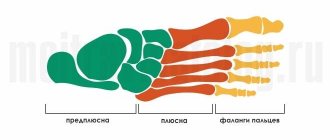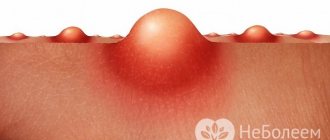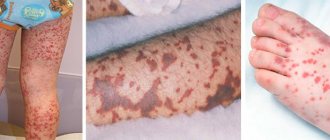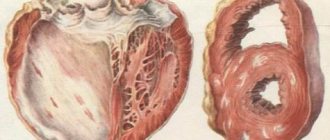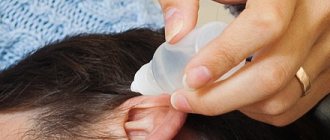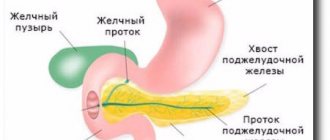A hip fracture is a common serious injury that occurs in old age. It can cause a number of dangerous complications and exacerbation of chronic diseases. Pertrochanteric fracture of the femoral neck in old age sometimes leads to death. An impacted fracture of the femoral neck in older people compromises the integrity of the most fragile part of the femur. The cause of the damage is a minor injury that occurs against the background of osteoporosis and other diseases accompanied by a decrease in bone strength.
Rehabilitation of patients using innovative methods of restorative therapy is carried out by specialists from the Yusupov Hospital. The rehabilitation clinic is equipped with modern devices. Rehabilitators take an individual approach to choosing a set of physical therapy exercises, physiotherapeutic procedures, and use various types of massage. With the help of effective medications that have a minimal range of side effects, they reduce the severity of pain and improve the structure of bone tissue. Medical staff provide professional care for elderly people with a hip fracture.
Causes of hip fracture
Geriatric people most often experience hip injuries when they land poorly on their side. People with severe osteoporosis are even more likely to injure their femur.
Important! Females are more likely to suffer from osteoporosis because calcium is washed out of their bone structures more quickly.
Factors contributing to hip fracture:
- fading of the reproductive functions of the female body;
- chronic deposition of cholesterol on the walls of arteries;
- stenosis and obliteration of peripheral arteries;
- excessive body weight, which increases the load on the joints;
- physical inactivity;
- impaired coordination due to neurological pathologies;
- unbalanced diet or complete refusal of food;
- oncopathology.
Young people, due to the strength of their bone structures, are less likely to experience femur fractures. For this to happen, the injury must be particularly severe.
In young people and middle-aged people, the causes of this pathology are as follows:
- road accident;
- injuries sustained at work;
- unsuccessful landing from a considerable height;
- injuries received during hostilities.
Various somatic diseases that contribute to disruption of the functioning of various organs and endocrine glands (diabetes mellitus, damage to the glomeruli - renal glomeruli, restructuring of the normal structure of the liver) also predispose to femoral neck fractures.
Causes of damage
It was noted above that a femoral neck fissure is diagnosed mainly in older women. Its cause is often menopausal osteoporosis.
Why is this happening? This phenomenon is explained by the peculiarity of the female body, which consists in cyclical changes in the concentration of hormones throughout the month. With the onset of menopause, the volume of female hormones in the blood gradually decreases, which affects the structure of bone tissue.
If a woman does not carry out systematic prevention, she may develop osteoporosis during menopause. This pathology is characterized by a decrease in bone density. Over time, this disease leads to the development of the following pathologies:
- Bone strength decreases.
- Even the slightest damage can lead to fractures and cracks.
- A fall from your height can cause a crack in the femoral neck.
- Against the background of ongoing osteoporosis, the femoral neck cannot recover on its own after an injury, which entails prolonged immobilization. As a result, the bone marrow may be damaged, which can lead to the development of various complications.
Another common cause of femoral neck cracks in older people is coxarthrosis. This disease often affects obese people, as well as those who regularly load their hip joints during work and sports.
If a femoral neck fissure appears in middle-aged and young people, the following probable causes can be identified:
- Too much stress when playing sports.
- Intoxication of the body.
- Pathologies in the functioning of the endocrine system.
- Accidents such as road traffic accidents or severe falls.
- Sedentary lifestyle.
- Completeness.
- Regular strict diets that lead to a deficiency of calcium and other nutrients.
- Oncological diseases.
Types of femoral neck fractures
Fractures at the femoral neck are classified differently. Several main types:
- Localization of the impact: in the area of the protrusion on the proximal epiphysis, neck or head of the femur.
- Exact localization of damage: medial (median) and lateral fractures (trochanteric, lateral).
- Level of integrity violation: distal to the head or at the border of the transition of the neck to the body - basicervical fractures.
- Type of displacement: impacted, varus or valgus fracture of the femoral neck.
As with any other bone structure, this area is classified as an open or closed femoral neck fracture. All medial femoral neck fractures are divided into abduction (neck-shaft angle exceeds 130°) and adduction (angle less than 127°). Each type of femoral neck fracture has its own characteristics and its own approach to treatment.
Important! In a transcervical femoral neck fracture, the line of disruption is located in the middle of the femoral neck.
Surgical intervention
Surgery is considered the most effective way to treat femoral neck fissures in older people. It is this that gives elderly patients a chance to live a full life. Conservative therapy may not be effective for them, so doctors prescribe it only when there are contraindications to surgery.
Osteosynthesis is most often used to treat femoral neck fissures. During such an intervention, the damaged area of the bone is connected using special knitting needles or medical nails.
If the joint is too worn out, the patient is recommended to undergo endoprosthesis replacement. It is also very often prescribed to people in old age. Such an intervention is considered quite complex, which greatly frightens patients. But it is worth understanding that endoprosthetics may be a person’s only chance of being able to walk without crutches.
We examined the symptoms observed during injury (fracture or crack) of the femoral neck. The most typical are problems with movement, up to complete immobility. To avoid ending up in a wheelchair, you need to agree to surgery. It consists of several stages:
- First, the injured femoral neck is removed along with the head of the femur.
- A prosthesis is installed in their place.
- In some cases, replacement of skewers is additionally required.
- After endoprosthetics, a person is raised to his feet on the third day. At first he moves only on crutches. This stage lasts up to 3 months.
After the operation, rehabilitation is required. The femoral neck is restored using physiotherapeutic procedures, therapeutic exercises, and massage sessions. A properly selected set of exercises will improve nutrition of damaged tissues and blood circulation. Therapeutic exercises and regular walking will help restore normal limb mobility. After surgery, it will be useful to resort to sanatorium treatment.
Symptoms of hip fractures
To provide timely assistance, it is important to know the primary symptoms of hip fractures:
- The affected limb loses its functionality. Walking or standing after an injury is an overwhelming task for many. The mobility of the hip bone joint is lost, as its configuration noticeably changes.
- Pain in the lower abdominal region adjacent to the thigh. They are especially pronounced in displaced femoral neck fractures. And with other types of pathology, the victim may not even be aware of his injury due to the absence of sharp pain. At rest he does not experience any discomfort, and when moving he feels only slight pain.
- Characteristic outer turn of the foot. With complete relaxation, the affected limb has external rotation. This is due to the anatomical features of the attachment of muscle fibers in this area.
- Difficult internal rotation. The victim is unable to turn the affected limb inward. This is also due to the peculiarities of the attachment of muscle fibers to the tubercles at the transition of the neck to the body.
- Gorinevsky's symptom of stuck heel. The inability of a patient lying on his back to raise his straight leg. But at the same time, the limb does not lose the ability to pronate and supinate.
- Increased pain with pressure. If you press on the convex part on the back of the foot of the straightened affected limb or tap this area, then severe pain appears.
- Changing leg length. This symptom is caused by adduction fractures of the femoral neck. This is explained by a decrease in the neck-shaft angle. But such a violation is usually mild and therefore not noticeable.
- Accumulation of coagulated blood in the subcutaneous fat. 48-72 hours after the injury, a hematoma forms in the groin. First, the vessels are damaged and blood is shed near the joint, deep in the tissues. And after a while it appears under the skin.
Each clinical case is individual. But even if at least one symptom of a fracture appears, the victim should be further examined by a specialist.
Impacted fractures
When the integrity of the impacted type is violated, general signs of damage are often absent. The function of the affected limb is almost completely preserved. A person can even move freely. But at the same time he experiences minor pain in the groin. Since these sensations are not particularly intense, they are not given much importance for a long time.
Important! Since the impacted fracture remains undetected, one or several fragments at once continue to gradually shift. After some time, the impacted fracture transforms into a non-impacted one.
Comminuted fractures
A splintered violation of integrity is accompanied by displacement of fragments. This occurs through the action of the muscles of the femur. Even if the victim has made a minimum of movements since the fracture, a complex defect can form, which will make the procedure for matching bone fragments after a fracture more difficult.
With this type of injury, bleeding is more common. Moreover, the risk increases depending on the number of bone fragments. The crunching of bones is also heard or felt during palpation. With an open wound, bone fragments are visible in the soft tissues with the naked eye.
The bruising is localized deep in the muscle fibers. Traumatic shock also often develops with such damage. In this case, the victim’s condition becomes critical.
Open and closed fractures
With open fractures of the femoral neck, soft tissue structures are inevitably torn. This type of injury is mainly caused by wounds caused by a firearm. It is accompanied by large blood loss and unbearable pain. Such victims require urgent hospitalization. Along with such injuries, other organs or structures are often damaged.
If the fracture occurred in the lower part of the hip and its type is closed, then the pain is localized in the knee area. The patient becomes completely immobilized. Even flexion and extension of the limb is painful. If a violation of integrity occurs inside the joint, then the pain will be mild, but swelling and bruising may occur.
Particular attention should be paid to closed injuries, in which the two oval protrusions on the epiphyses of the femur are displaced. The line of integrity violation runs along the entire bone joint and provokes an outpouring of blood into the joint cavity.
Types of hip injuries
Damage to the femoral neck is divided into types depending on its location:
- Subcapital injury - the bone closest to the head of the joint is injured;
- Basiscervical injury - when the broken area is as far as possible from the head of the joint;
- Transcervical injury - located directly at the femoral neck.
A subcapital fracture in an elderly person heals worse than other types of injuries. This is due to its close location to the femoral neck. A person develops osteonecrosis of bones.
The second factor that is taken into account when classifying a femoral neck injury is the slope of the bone fracture line. Depending on the angle of inclination, fractures are divided into degrees:
- I degree - less than 30 degrees;
- II degree - bone fracture angle 30–50 degrees;
- III degree - the slope of the fracture is more than 50 degrees.
A favorable outcome and fusion of fragments is possible only with a horizontal fracture or if the angle is no more than 50 degrees. In an elderly person, a 3rd degree fracture means that he will no longer recover on his own. The person will not be able to walk and remains bedridden.
Cervical fractures, depending on the location of the bone fragments, are divided into two groups: with displacement and without. With displacement of fragments they are divided into subgroups:
- Varus - when the head moves down and inside the pelvic ring, forming an angle between the body and the femoral neck;
- Valgus - the head is displaced upward and to the side, the angle between the femoral neck and it increases.
There is also an impacted fracture, when one fragment goes inside another. Injuries with displacement of fragments are especially dangerous, as they can be accompanied by hemorrhage into the soft tissues. When bones break, they become deformed, and the victim experiences a pronounced pain symptom. The person needs immediate surgery and recovery will take at least 1 year.
Diagnostics
When diagnosing a hip fracture, a specialized specialist adheres to the following plan:
- Listens to the patient's complaints and collects a thorough medical history.
- Conducts a physical examination and, based on external manifestations, tries to determine the presence of a femur fracture.
- To make a final diagnosis, the victim is prescribed radiography or CT/MRI.
Without an X-ray examination, there is no point in speaking with certainty about a violation of the integrity of the femoral neck. To ensure that the result is as accurate as possible, photographs are taken in anterior and lateral projections. If necessary, the orthopedic traumatologist will recommend additional projections for images to clarify the clinical picture.
How to provide first aid for a hip fracture
After injury, the victim should be urgently taken to a specialized medical facility. You can take the patient yourself or wait for an ambulance. Before her arrival, it is advisable to carry out the following first aid actions for a hip fracture:
- The patient takes a horizontal position with emphasis on his back.
- If there are obvious signs of shock, all necessary measures are taken to eliminate it. It is allowed to give painkillers (Ketanov, Nurofen, Dikloberl).
- The injured leg is immobilized and fixed. Use any available means: block, board, beam. It is advisable to fix not only the hip, but also other bone joints of the leg. If there are no suitable materials at hand, then bandage the injured limb to the intact one.
- Make sure that the fastener is applied correctly. It should be long. It is applied so that it starts in the groin and runs along the inner surface of the leg, right up to the heel bone. Its support points: groin, knee, heel.
- Clothes and shoes are not removed from the victim. If a person is injured at sub-zero temperatures outside the room, then the injured leg is covered with something on top. This is done to protect against frostbite, since the affected limb is more susceptible to low temperatures.
- If bleeding is present, the leg is tied with a tourniquet, but not too tightly. At the same time, she is constantly being watched. If it starts to turn blue, the bandage is loosened.
The first aid provider must remain calm and not overreact to the screams and moans of the victim. At the same time, he should also try to calm the patient. But those who do not feel pain after a serious injury deserve more attention. Most likely they went into shock.
Why contact us?
We have everything in order with our conscience: with developed technologies and a “full hand,” we perform many operations, and we need a quick turnaround of the bed. Therefore, we are vitally interested in ensuring that help is available to the majority, that is, each specific patient can receive it, be satisfied with the result and then recommend us. And not necessarily to friends - let their health be fine. It is enough to write a sincere review on the website, publish a post on Odnoklassniki or Facebook.
You will never regret choosing us!
Doctors with experience in thousands of hip replacement surgeries!
Treatment
How to treat a hip fracture is decided by a traumatologist, orthopedist and neurologist. They take into account the type of integrity violation, the age category of the patient and other circumstances. This type of injury is often treated with radical (surgery) rather than conservative methods. Natural fusion without the use of auxiliary structures occurs extremely rarely.
Conservative therapy
A femoral neck fracture can be treated without surgery in the following cases:
- the ends of the broken bone are embedded among themselves;
- damage to the lower segment of the cervix affecting the processes located underneath it;
- general critical condition of the patient.
When the line of integrity violation occurs horizontally in impacted injuries, conservative treatment is advisable. If the fracture has a vertical direction, then the damage quickly becomes unimpacted, so gentle methods will no longer be justified.
Treatment regimens:
- Impacted fracture. In the first days, the victim is prescribed bed rest and wearing a derotation boot. It does not allow the injured limb to turn to the side, which is extremely important for the successful fusion of bone structures. You will have to wear this product for at least 3-4 months. Patients are recommended to walk with the help of devices that support the body without placing any emphasis on the injured limb.
- Lateral fracture. In case of damage without displacement, the patient wears a cast until complete healing. This usually takes at least 3.5 months. After 6 weeks from the start of treatment, moderate loads on the affected limb are indicated. If there has been displacement, then traction with weights, carried out in an inpatient trauma department, is indicated before wearing a plaster splint.
- The presence of obvious contraindications to radical treatment. Emphasis is placed on early immobility to save the victim's life. But you can’t expect that the fragments will heal in this case.
Treatment of femoral neck fractures without surgery with the use of immobilization elements is resorted to if the patient is severely malnourished or has senile insanity.
The attending traumatologist will explain whether a person can sit with a hip fracture and when he can get up. Therapy is most often performed according to the following scheme:
- The victim undergoes the first stage of treatment in a specialized orthopedic or traumatology department.
- After injury, the patient spends the first 8 weeks in traction, in which the load is applied directly to the damaged bone.
- After 2 months, he is placed in a fixation splint and released to continue treatment at home. In this case, it is allowed to move with devices to support body weight, focusing only on the healthy leg.
- A course of massage, exercise therapy and physiotherapy is shown.
- After 16 weeks, it is allowed to gradually use the injured leg, but in agreement with the attending physician.
If circumstances go well, he will be able to walk without the help of supporting devices in at least 6 months.
With early immobilization, the therapeutic regimen is as follows:
- direct injection of local anesthetics into the joint;
- traction with a load for 1.5 weeks;
- after removing the structure, frequent turning of the patient in bed;
- attempts to sit him on the bed;
- after 20 days, it is recommended to get out of bed and move around with the help of supporting devices.
If they feel well, such patients are discharged from the hospital. But for the rest of their lives, they will have to walk with the help of supporting devices or ride in a wheelchair.
Surgical intervention
Victims who have experienced a femur fracture rarely survive without surgical intervention. It is recommended to carry it out in the next 24 hours after injury. The operation is postponed for some period if there are contraindications. At this time, the patient is placed on traction
Most orthopedic surgeries are performed using the following general principles:
- Application of anesthesia. What anesthesia will be used (general or local) depends on the complexity of the operation and the general physical health of the patient.
- Before fixing the processes, the specialist carefully compares them.
- For a simple fracture, a closed type of operation is used without opening the joint capsule under the control of an X-ray machine.
- In case of complex violations of the integrity of bone structures, manipulation is performed to compare the processes with the articular capsule opened.
Endoprosthesis replacement is preferred in cases of high risk of complications. This manipulation involves replacing the hip and acetabulum bones with artificial prostheses.
Important! The older the patient, the greater the likelihood that he will need to replace the hip joint with a prosthesis. Numerous fragments, displaced fragments or necrosis of the head are also important reasons for such intervention.
Orthopedic surgeons are often forced to connect bone fragments using metal structures (ostiosynthesis).
Options for such manipulations:
| Type of surgery | Description of manipulation |
| Using Smith-Petersen Tri-blade Nails | The design allows you to securely hold femur fragments. They are inserted into the cervix using a special impact surgical instrument from the side of the processes located under it. |
| Using triple screws | This method is considered more reliable when compared with nail osteosynthesis. It is in demand in orthopedics when treating young patients. |
| Using a Dynamic Hip Screw (DHS) | A metal structure consisting of several screws is screwed into the femur. DHS is a complex and unwieldy package. It is used extremely rarely. More orthopedic surgeons prefer to use single screws. |
Folk remedies for treatment and rehabilitation
To reduce the risk of nonunion and speed up regeneration processes in a broken limb, some resort to folk remedies. Particular emphasis is placed on replenishing the body with organic calcium.
Some people try to eat chalk or eggshells, but this does not make sense because they contain inorganic calcium. Under the influence of stomach acids, it forms salts, which are excreted naturally and also settle in the kidneys.
Sources of organic calcium:
- Sesame seeds. They are passed through a meat grinder, blender or pounded in a mortar. Take 15 g with each meal or add them to soups, salads, and cereals. But this product sharply increases blood viscosity, so people prone to thrombosis are better off giving preference to a glass of milk or kefir.
- Dried roach. The fish is minced with the head, scales and bones. Use this product in unlimited quantities. Together with main meals or separately from them.
- Dried figs. 8 figs contain up to 107 mg of calcium. This is 10% of the daily requirement. This product is also widely consumed for the reason that it contains a large amount of antioxidants. It is eaten between main meals.
Fractures do not heal well when the endocrine system is disrupted. Traditional healers recommend replenishing the lack of iodine in the body by using the green peel of nuts. It is crushed and covered with sugar. Keep in the refrigerator for 5 days and take 5 ml 3 times a day after meals.
Reviews from our patients
- The patient thanks Ekaterina Anatolyevna Tafintseva July 22, 2019
I would like to thank Dr. Ekaterina Anatolyevna for her attention, sensitivity, professionalism, and her manner of communicating with patients. God bless her!!! She got me back on my feet in a short time!! Everything is decent, everything is professional, the clinic is wonderful. Thank you all very much and bow to you. 07/03/2019read more
- We thank the clinic staff for their professional help, attention and care April 18, 2021
We thank the clinic staff for their professional assistance, attention and care. We especially thank Ekaterina Anatolyevna Tafintseva, as well as the average honey. staff. Delicious food, high technical equipment, one of the best price-quality ratios in Moscow. Thank you! CAT. 04/16/2019
read more
- Thank you very much to all the employees of Medicine 24/7 for your attentiveness April 9, 2021
Thank you very much to all the employees of Medicine 24/7 for your attentiveness and your politeness. The conditions are excellent. Thank you very much to my doctor Alexey Nikolaevich Moskalenko for his patience, for answering all the questions that we ask in a state of shock, for his humanity. Good guys, keep it up. If you don’t think about where you are, the atmosphere is calm, as if you’re in a hotel on vacation, but there’s no sea outside the window. Thank you thank you thank you. 04/08/19 K.P.
read more
- “This is where the attending physician gets upset and rejoices along with the patients” March 22, 2021
Every person must be unlucky once in his life in order to understand exactly what it is like and in order to learn to appreciate when he is lucky. A classic of the genre: this happened to me too. One time I was unlucky. You can sin at anything, but there is a fact - a person did not protect his health. Why all this preface, you ask? Absolutely equivalent: once lucky. Lucky...
read more
- Feedback to doctors Andemir Olegovich Akhov and Marina Sergeevna Klimova
Feedback to doctors Andemir Olegovich Akhov and Marina Sergeevna Klimova March 21, 2021
The patient was admitted to the clinic with inflammation of the knee. An orthopedist at the Medicine 24/7 clinic, based on MRI images, prescribed arthroscopy of the knee joint. After a successful operation, the patient shares her impressions of the treatment and hospital stay at the clinic: “I came to the clinic because of an inflamed knee; it was simply impossible to walk. Here I was received by Dr. Andemir Olegovich Akhov. After looking at my knee and the MRI results...
read more
- Thank you so much for giving me hope in life March 20, 2019
Many thanks to all the staff of the Medicine 24/7 clinic for their professionalism and attentive attitude towards me. For giving me hope for life, for a deep, high-quality examination, for patience, for attention. I thank all the clinic specialists for creating comfort and coziness in the wards. I will recommend your clinic to all my relatives, friends and fellow villagers. Good health to everyone and don't get seriously ill. 03/16/2019
read more
- Review of treatment in the clinic and the work of oncologist Petr Sergeevich Sergeev
Review of treatment in the clinic and the work of oncologist Petr Sergeevich Sergeev March 6, 2021
A patient of the Medicine 24/7 clinic shares his impressions of the treatment: “I have already become a regular client here, so I can rightfully say that this is my clinic. So, when I enter my clinic, I find myself in a completely different atmosphere. An atmosphere of discipline, order, attention to detail in all processes, professionalism of all employees. The most important significant factor is the attitude towards patients: complete friendliness, very...
read more
Is it possible to walk with a hip fracture?
Relatives who care for the victim are often interested in whether it is possible to sit with a hip fracture, much less walk. If it is not possible to perform hip replacement, and the patient is sent to recover at home, then some doctors insist on bed rest.
Other experts recommend that as soon as acute pain stops (7-10 days after the injury), perform the following manipulations:
- constantly seat the patient;
- turn him in bed from side to side;
- teach him to move with devices that support his body;
- sit him on the edge of the bed with limited load.
Such actions allow the formation of a neo-joint. It is a false joint, which partially compensates for the damage.
Procedures at home
Massage sessions at home should be carried out by experienced massage therapists or loved ones with classical massage skills. It is carried out using therapeutic massage or oil (linseed, pine, sea buckthorn) with pine resin.
For massage and a warming compress, you can prepare the following oil: add essential oils (drop by drop) to vegetable oil (1 tbsp): rosemary (10), cloves (5), or fir (pine or cedar), lavender, cloves - 5. The compress is applied after a light massage at night.
The oil can be prepared by adding one of the essential oils (15-20 drops) to 50 ml of a vegetable oil base: olive, lean, flaxseed, corn, sesame or almond. You can apply a compress of pure essential oils: eucalyptus, lavender, geranium, sage, rosemary, rose and patchouli. If you add these oils to 1 tbsp. l. basics, you will need 15 drops of one of the essential oil names.
Resin in linseed oil for massage
You can rub gum turpentine into the area of the femoral neck with light massage movements, and take brine baths (400 g of sea salt per 100 liters of water at a temperature of up to 40°C). And also with infusions of medicinal herbs: sage, eucalyptus, pine needles, lavender, St. John's wort and mint for 15-20 minutes, apply compresses of heated wax or paraffin, gel-like bischofite.
For swelling of the legs, prepare jelly from flax seeds and apply compresses to problem areas. You can lubricate or apply compresses from the following ointment: pour finely chopped young juniper shoots with heated butter and simmer in the oven for 30 minutes.
You can pour melted goose fat. With daily lubrication or applying compresses at night, bone, cartilage and soft tissues will be restored.
The oil emulsion of the golden mustache has healing properties: the mustache and leaves are crushed and completely filled with olive oil. Next, it is heated in a water bath and brought to a temperature of 40-50°C. Let it brew for 60 minutes and rub it into the skin over the crack 2 times a day. Course – 30 days.
At home, you can use a magnet for treatment. The magnet is washed, dried and attached to an empty cream jar. This homemade massager is moved clockwise in the area of injury for 20 minutes once a day for a course of 20 days. After 1.5 months the course can be repeated.
Cream and capsules for the treatment of pelvic and hip fissures due to injuries
Natural native organic cream “Sustard” and capsules are in demand. The cream penetrates deeply into soft tissues.
The cream is based on osteoblastic and chondrocyte cells of Altai deer antlers and the milky juice of medicinal plants. The composition has analgesic, anti-inflammatory, wound-healing, regenerating, restorative and anti-infective properties.
The composition includes the following plants: marsh cinquefoil (rhizomes), meadow clover (flowers) and chamomile (flowers), Ginkgo biloba, filamentous usnea, large burdock (root) and common plantain (root and leaves), Lespedeza kopechnika (herb), white willow (bark), laurel (leaf). And also extracts: black cumin and cordyceps, artemia and sea buckthorn, Kenyan pepper and Indian onion, oils: St. John's wort, amaranth, juniper and hemp, incense and tea tree, stone oil, Panthenol and mumiyo, tar, Vitamins: C and PP.
To speed up tissue regeneration and increase immunity, after applying Sustarad ointment, you need to take capsules of the drug: in the morning - 1 colorless capsule, in the evening - 1 colored capsule half an hour before meals. Also, this treatment can eliminate the destruction of tissue: bone and cartilage in post-traumatic arthrosis and arthritis, osteoarthritis, osteoporosis, compensate for synovial fluid in the joint in case of metabolic and endocrine processes, normalize hormonal levels (especially in diabetes and thyroid diseases), eliminate the growth of bone spines and pain.
The colorless capsule consists of a native concentrate: cinquefoil rhizomes, white willow bark, laurel leaves, walnut partitions, lingonberry fruits, lemon balm, burdock root, clover, Ginkgo biloba leaves, as well as hyaluronic acid and glucosamine hydrochloride.
The colored capsule consists of native concentrate: St. John's wort, sweet chestnut fruits, white cinquefoil rhizomes, plantain root, cinnamon rosehip roots and fruits, deer antlers, beaver musk, as well as the "Cartemia"® biocomplex, fenugreek, white mustard, ginger, chondroitin sulfate, purified Altai mumiyo.
In order for bone, cartilage and soft tissue to heal well in case of cracks, you need to take mumiyo (0.2 g) on an empty stomach in the morning 60 minutes before meals. diluted in milk with honey or in fruit juice – 30 days. Celery-spinach-cucumber-carrot juice diluted with water (¼ cup of each type of juice and water) is useful. Drink 2 times a day, 1 tbsp. before meals.
Flower pollen (1 tsp) diluted in 1 tbsp will increase immunity and accelerate the regeneration of damaged tissues. water. Drink up to 3 times a day half an hour before meals, or only on an empty stomach in the morning.
Rehabilitation
Until relatively recently, the main treatment tactics for geriatric patients consisted of applying a derotation boot and remaining in a supine position for at least 3 months. But this approach is fraught with the development of severe complications that can even lead to death.
Modern orthopedists and traumatologists use different tactics. They recommend starting rehabilitation as early as possible. This means: sitting up in bed, standing on your feet using crutches, and also moving around with the help of various devices that support the body.
Important! In the absence of the possibility of endoprosthetics, special emphasis is placed on exercise therapy, physiotherapeutic manipulations and massage courses.
Well-mastered therapeutic exercises make the recovery period more effective. Regular exercise therapy protects against the development of severe complications, strengthens muscles, and prevents the thinning of muscle tissue. The sooner the patient makes friends with physical therapy, the sooner he will get back on his feet.
Exercise therapy after a hip fracture is divided into 3 parts:
- Already in the first days after injury, patients do breathing exercises. Then, in a lying position, they alternately strain (for no longer than 30 seconds) the muscles of the back, abs, buttocks, upper and lower extremities. At the next stage, all movable joints (neck, healthy limbs, shoulder girdle) are bent.
- After removing the plaster cast, patients perform more dynamic exercises with healthy limbs. The complex is shown to them by a physical therapy instructor. The patient performs all exercises lying on his back and at first under the strict supervision of a physiotherapist.
- The patient adds walking to classic exercise therapy classes. At first he uses stilts and one/two canes for this. And after he feels confident, he tries to move without support.
The rehabilitation period requires the restoration of not only physical strength, but also sustainable psycho-emotional health. Even after starting to walk again, the victim still feels especially vulnerable for some time and because of this he constantly experiences depression. Close people can try to help improve the emotional state of the patient. If depression does not go away, then you can use the services of a psychotherapist.
In order for the victim to quickly return to a full life, an integrated approach is necessary. It is important to regulate sleep, improve eating habits, and treat concomitant somatic diseases. It is useful to take massage courses and go to the pool.
What can a patient expect after surgery?
Treatment of the femoral neck is a very long process, especially for older people. In the hospital, health workers perform the following actions:
- Over the course of a week, the person is given antibacterial drugs and blood thinners.
- A pillow is fixed between the legs, which keeps the limbs at a safe distance from one another.
- On the second or third day after surgery, the patient is recommended to have minimal mobility. For example, he can do breathing exercises and simple gymnastics for the leg muscles.
- For 3-4 days after the operation, the person is helped to stand on his feet with crutches.
- On days 12-14 after prosthetics, doctors remove the stitches and send the patient home.
Caring for a patient with a fracture
For hip fractures, a number of medical devices will be needed during home care. To alleviate the patient’s condition, some purchase special medical beds, bedspreads, and mobility aids. But the presence of medical devices does not in itself improve the condition of the victim. First of all, human care is of great importance.
When caring for a patient with a hip fracture, you should pay attention to the following points:
- Establish contact with the victim. Due to constant pain and feelings of hopelessness, they may feel constantly overwhelmed and become depressed. The task of the caregiver is to constantly encourage them and provide psychological support. In the case of geriatric patients, it is important to recognize the signs of senile dementia early.
- To relieve groin pain, the use of analgesics or NSAIDs (Dexalgin, Ketorol, Movalis) is indicated. It is advisable to give the victim oral medications throughout the day. And at night they give injections.
- The nurse must master a light, gentle massage. It is necessary to improve blood circulation and reduce pain.
- It is useful to equip the patient's bed with special devices that allow him to raise the pelvis. This is necessary when it is not possible to regularly turn the patient from side to side.
- To relieve minor needs, you need to place a vessel with a beveled edge under the patient. If the victim has incontinence, then diapers are put on him or moisture-absorbing diapers are placed on him. Make sure that the patient does not lie wet.
- To prevent bedsores from forming on the sacrum and heel of the injured leg, it is important to periodically lift the pelvis from the bed and keep the bed dry. And the patient’s skin must be treated with powder with talcum powder and other medications intended to combat bedsores.
- To prevent intestinal atony and constipation, the patient tries to periodically change the position of the body, and also regularly undergo cleansing enemas. If necessary, use laxatives for oral administration (Dufalak, Picolax), as well as salt microenemas (Microlax, Normacol).
- In order to prevent the development of pneumonia, exercises to activate breathing are shown.
Bedridden patients need proper nutrition. It should be balanced, fractional, but frequent. In order for intestinal motility to be well established, the patient should eat less meat and eat more vegetables and fruits.
It is important that the patient consumes enough fluid (1.5-2 liters per day). If he drinks little water, blood circulation deteriorates and the risk of bedsores increases.
The diet should also contain any fermented milk products, bran and fiber. If you have no appetite, you can use herbal decoctions that can stimulate it. Explanatory conversations should also be held with the patient about how proper nutrition promotes a speedy recovery.
Clinical example No. 1
Human tragedy found on the Internet:
“My mom had 2 broken femoral necks due to osteoporosis. First one, a month later the second. Didn't fall. They broke themselves. Pathological fracture. She was 61 years old. They did not operate because I had rheumatoid polyarthritis. Mom was in bed for 14 years.
It grew together there. callus has formed. I could sit by myself. There is no need to get up. So she sat on the bed. Chronic renal failure began to develop. For the last 3 years I couldn’t even hold my head up. When I spoon-fed her, I coughed all the time. She died of bilateral community-acquired pneumonia at the age of 75.”
Let's comment:
Rheumatoid polyarthritis is not an absolute contraindication for bipolar hip arthroplasty; however, it could be a reason for refusal of metal osteosynthesis. The cost of a set of 2 sets of imported implants 15 years ago was approximately the same - about 6.5 thousand dollars. Currently, both imported and domestic ones are available - the first at a price of 3 thousand dollars, the second - from 65 thousand rubles .
After endoprosthetics, the implant survival rate is more than 95%. Life expectancy in operated patients does not differ from their peers without pathological fractures.
You can independently calculate the cost of nursing services for 14 years. And also the inability to work, even while retired. Plus money spent during the last three years of life.
Is economics becoming simple and clear?
We need to decide right now!
An operation today will save money tomorrow and in six months! Tomorrow may be too late!
Are patients with a hip fracture entitled to disability?
Taking into account the various consequences of a hip fracture, victims may be assigned disability group II or III:
| Group II | III group |
| Complication of primary violation of the integrity of the femoral neck by the formation of a false joint. | The formed false joint moderately disrupts the support on the injured limb and interferes with normal movement. |
| Necrosis of a section of bone tissue of the injured femoral head. | Complication in the form of degenerative-dystrophic disease of the hip joint (coxarthrosis). |
Victims who, after recovery, are unable to return to their previous place of work due to reduced qualifications, may also be assigned disability group III.
Injury Prevention
The main way to prevent damage to the hip joint is the timely identification and treatment of conditions that precede a femoral neck crack - coxarthrosis and osteoporosis. These pathologies can only be detected during examination. Therefore, elderly people should undergo regular skeletal densitometry.
Elderly patients are also recommended to enrich their diet with dairy products, vegetables and sea fish. Additionally, as a preventative measure, you can take vitamin D and medications containing calcium.
To prevent hip injuries, it is useful to train the muscular frame. Systematically performed exercises protect bones from damage due to increased tone of skeletal muscles.
It is equally important to make your life as safe as possible. Those planning long walks should use a cane. It is advisable to install comfortable handles in the bathroom that you can lean on during various manipulations. Particular care should be taken when walking on stairs and on slippery areas of the road.
These simple rules of prevention can significantly reduce the risk of injury and protect the femoral neck from any damage.
Why do people die after a hip fracture?
Mortality after hip fracture is particularly elevated in geriatric patients. This is due to the fact that against the background of a long forced stay in a supine position, their risk of such pathologies increases:
- thrombosis of the veins of the lower extremities;
- pathologies of the cardiovascular and respiratory systems;
- exacerbation of chronic diseases;
- introduction of infection;
- suicidal tendencies.
But most often, elderly patients die from congestive pneumonia, thromboembolism or heart failure. A femoral neck fracture is a serious pathology. The rehabilitation period takes a lot of effort both on the part of the victim and on the part of those caring for him. But if you are diligent and coordinate all your actions with your doctor, then in at least half of the cases you can count on a favorable prognosis.
Conditions for assigning disability
Given the long periods of treatment and recovery, disability is given to almost all patients. For persons of working age, the commission determines temporary loss of ability to work for a year. Then she studies documents about the treatment and examination performed during this period.
If there is an improvement, the group can be reduced to the 3rd, with adequate employment for light work. After another year, if the function is restored, the group is removed, and if the disorders are persistent, there is no dynamics of treatment, a conclusion is given about permanent loss of ability to work.
As for pensioners, they usually receive group 2 disability. This is a kind of help for older people, an increase in their pension needed for treatment.
